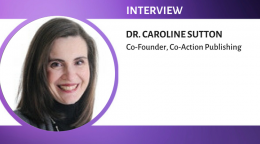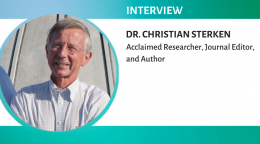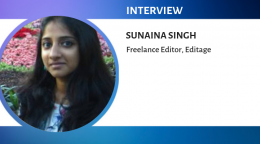A candid conversation between editors: What makes a good article?

In this guest piece, we join Editor-in-Chief Dr. Alicja Syska and Associate Editor Amy Sampson from the Journal of Learning Development in Higher Education as they reflect on their experiences of guiding authors through the publication process.
Alicja: So, Amy, we've been doing this for a while now – what would you say are the key ingredients of a truly standout article?
Amy: That's not an easy question. For me, it usually comes down to three things: originality, clarity, and rigorous methodology.
Alicja: I agree with those, and I'd add relevance to the field and potential impact; but also, really good writing. We see so many submissions that are well-presented but don't really push the boundaries of knowledge; and also the opposite – strong ideas but not well articulated.
Amy: Absolutely. It's not just about being novel; it's about being meaningfully novel and conveying it in ways that will capture the imagination of the journal’s reader. I remember this one paper last year – it was beautifully written and had interesting findings but it was also clearly prepared for a different outlet. With careful repositioning, it would have suited our journal, but you could tell it was written to meet the needs of different readers.
Alicja: Oh, I remember that one. It was tough because you could tell the author had put in so much work. So this is a crucial point – alignment with the journal's scope and aims.
Amy: That's actually one of the most common reasons we have to decline submissions. Authors sometimes overlook the importance of ensuring their work fits with the journal's focus. Ironically, this information can easily be found on every journal's website and is one of the first things editors will check when reviewing a submission.
Alicja: We should emphasise how crucial it is for authors to thoroughly check for guidance on aims, scope, and style – which may vary widely among journals – before submitting. It can save everyone a lot of time and frustration. The same goes for writing an effective abstract – it is remarkable how many authors do not pay sufficient attention to it.
Amy: To me, abstracts often lack a clear articulation of the aims and contribution of the paper – two critical elements when it comes to being able to assess the value of a submission. But speaking of guidance, I think it's worth mentioning how many journals, including ours, strive to support authors throughout the submission process. We often provide feedback on how an article could be amended or repositioned for a successful resubmission.
Alicja: That's an important point. I always tell authors that our goal isn't to gatekeep, but to help bring good research to light. Sometimes we might spend initial time with authors suggesting formatting or structural changes to the submission before we even send it out for peer review, but this is not to create barriers to entry but to facilitate a more constructive review process that focuses on the ideas rather than the more procedural or stylistic aspects of a piece of writing.
Amy: It's all about setting the article up for success with our reviewing community and to respect our reviewers’ time. Now, shifting gears a bit, how do you handle rejections, especially when you can see the effort involved?
Alicja: That's always the hardest part of the job, isn't it? I try to be as constructive as possible in the feedback. It's not about tearing the work down, but showing a path forward.
Amy: I always tell authors that rejection isn't the end – it's part of the process. Some of our best published papers came back stronger after an initial rejection or major revision.
Alicja: Indeed. I really like how Paul Silvia calls rejection a ‘tax’ on publication. Everyone pays it and everyone should expect it.
Amy: It is still hard to deal with it though, and I can understand it. What are your top tips for managing rejections?
Alicja: I think it’s important to normalise rejections and not to see them as personal. It can be productive to approach a rejection – or a difficult review for that matter – as feedback for the words on the page, not as a judgement on us as authors.
Amy: That’s a great challenge, but it can really help to reframe it this way. Speaking of reviews, what do you think authors misunderstand most about peer review? For me, the most salient issue is always the timeline. Many authors don't realise how long it can take to find suitable reviewers, get their comments back, and then make a decision. Often those working on behalf of the journal are volunteering their time and the multiple people involved means publication isn’t a quick process.
Alicja: I’d add the collaborative nature of it all. Some authors see reviewers as adversaries (I’m thinking here about the legendary Reviewer 2!), when really, we're all working towards the same goal – advancing the field with quality research. You might even disagree with the reviewers’ recommendations but often can work together to negotiate the shape of the paper. This step is really to improve the article by the end of the process, so it aims to be supportive.
Amy: That's a great point. What advice would you give to first-time authors who are nervous about submitting?
Alicja: First, I'd go back to what we said before: don't be afraid of rejection. It happens to everyone. Second, read the submission guidelines carefully. You'd be surprised how many papers we have to send back just because they didn't follow basic formatting rules or weren't aligned with our journal's scope. Double checking that your paper is fully anonymised, matches the style guide, and complies with ethics and other journal policies such as AI, will avoid delays in publication. And remember about that strong abstract – some journals will reject your paper simply because the abstract doesn’t clearly articulate your contribution.
Amy: And perhaps get feedback from colleagues before submitting. Fresh eyes can catch issues you might have missed.
Alicja: Oh, and proofread, proofread, proofread! The way you present your paper matters.
Amy: And don't hesitate to reach out to the journal if you have questions. Many of us are more than happy to provide guidance or clarification on our submission process.
Alicja: It might seem intimidating at first but it’s always worth reaching out. Any final thoughts on what makes the whole process worthwhile?
Amy: For me, it's seeing new ideas come to life. There's nothing quite like reading a paper that makes you think, ‘Wow, this could really change things’. It reminds me why we do this work.
Alicja: I like this element of challenge. It's about pushing the boundaries of knowledge, one paper at a time, while ensuring that we're publishing content that truly serves our readership.
Amy: So it’s important to keep writing and submitting, accepting that it’s not always an easy process but can be a wonderfully rewarding one.
Alicja: And one of the best ways to understand that process is to become an editor yourself. If you’re interested in that path, start by reviewing for the journals you follow to immerse yourself in the field. We always welcome new authors and reviewers in our journal, so don’t hesitate to get in touch!
We hope that this conversation illuminates the key processes, considerations, and highlights of publishing from an editor’s perspective, and that the insights gained from it will allow the readers to grow as researchers and authors. While the publishing process can be challenging at times, and our approach to publishing reflects the unique way in which JLDHE operates, navigating it in an informed way will augment the rewards it brings. We wish our readers a positive and gratifying publishing experience.
A note on the authors:
Dr Alicja Syska is Editor-In-Chief at the Journal of Learning Development in Higher Education. She is a Learning Development Advisor at the University of Plymouth where she also holds lecturing posts in Education and History. Alicja has a Ph.D. in American Studies from Saint Louis University, USA, is a Senior Fellow of Advance HE, and an ALDinHE Certified Leading Practitioner. Her interests include writing, community building, Third Space identity, and researcher development.
Amy Sampson is an Associate Editor at the Journal of Learning Development in Higher Education. She is an Associate Director for Online Learning at University of Greenwich. She is a Principal Fellow of Advance HE, holds an MA in Creative Education and reviews for two other educational journals.
Those interested in submitting or reviewing for the Journal of Learning Development in Higher Education can find more information through https://jldhe.aldinhe.ac.uk/
Comments
You're looking to give wings to your academic career and publication journey. We like that!
Why don't we give you complete access! Create a free account and get unlimited access to all resources & a vibrant researcher community.














